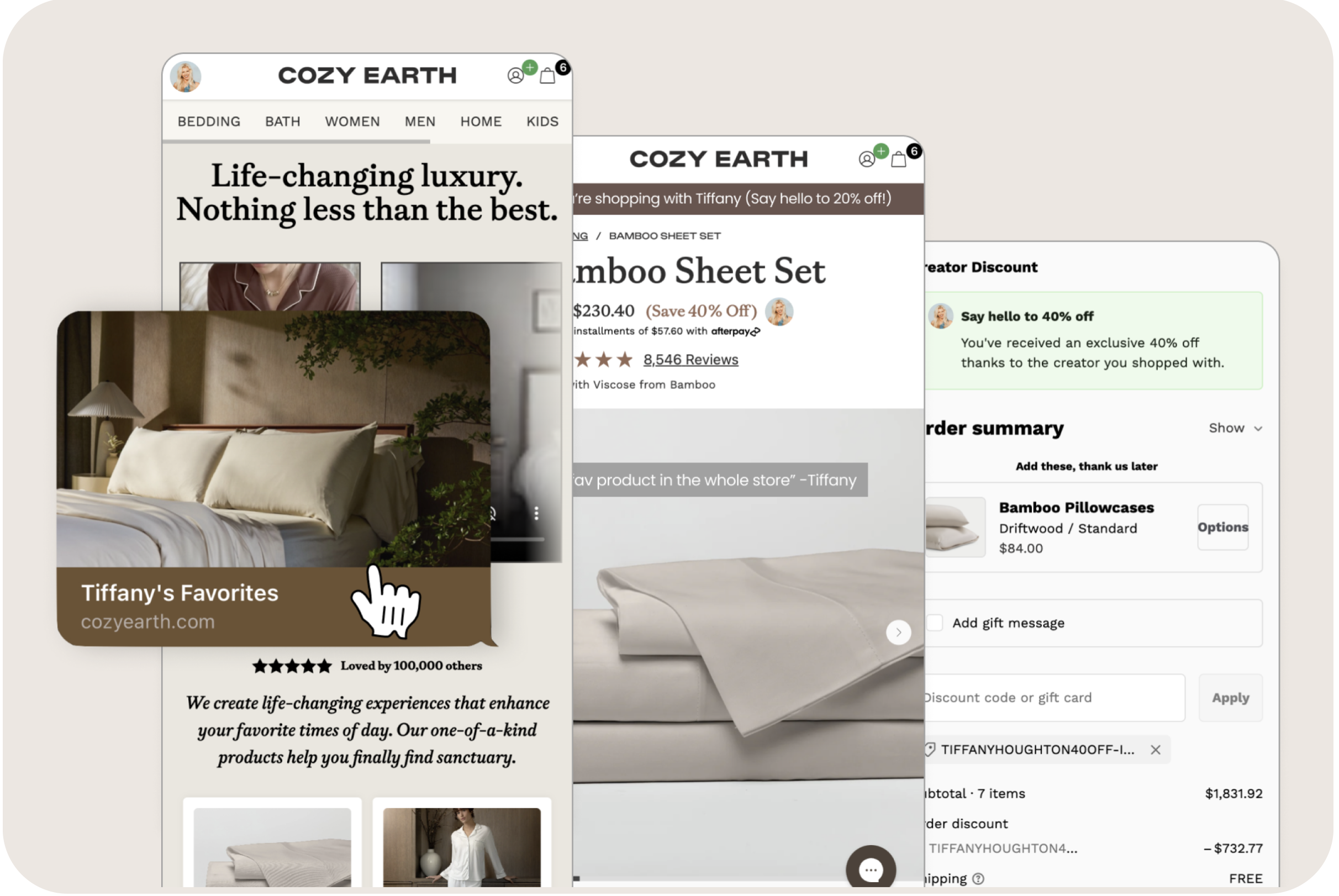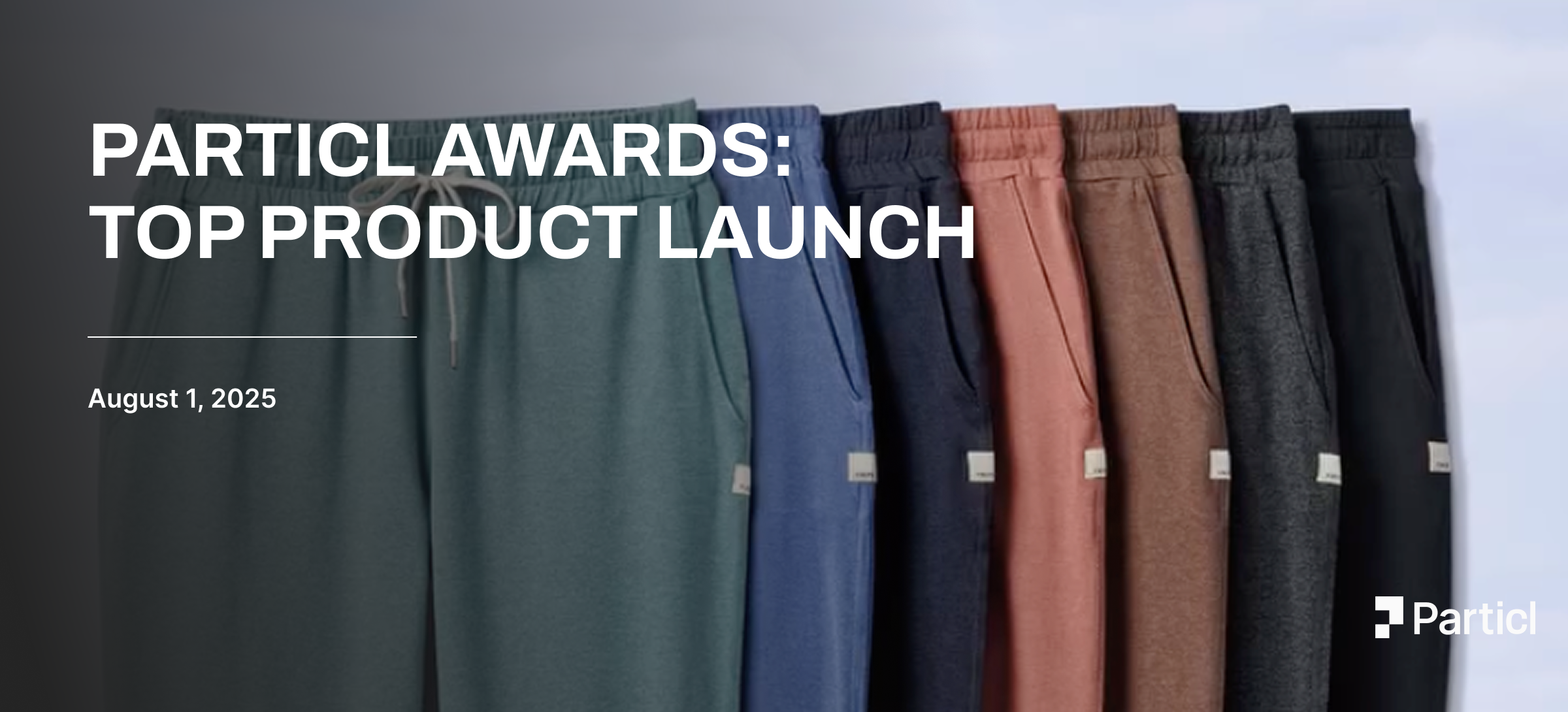Managing Catalog Creep: How Smart Brands Keep Growing Without Losing Focus

Managing Catalog Creep in E-Commerce
How Smart Merchandising and Influencer-Led Curation Keep Big Assortments Performing - a joint report from CreatorCommerce and Particl
Introduction
As e-commerce brands scale, their product catalogs tend to balloon. More SKUs mean more chances to catch a trend, fill an assortment gap, or serve niche demand. But unchecked catalog expansion, or catalog creep, can quietly undercut performance.
Too many choices overwhelm customers, dilute marketing efforts, and increase operational risk. The challenge today isn’t how to grow your catalog. It’s how to manage it.
Key Findings
Particl analyzed product data from top-performing (i.e., top ~1,000 in sales volume) e-commerce brands to quantify how fast catalogs are growing, and what happens when they grow too large.
Here’s what we found:
Normalized SKU and Variant Growth (2023 to 2025)
Monthly variant count across top brands tracked by Particl
- Average catalog size has increased significantly across top brands over the last 2 to 3 years.
- Growth between June 2023 and the same month this year was nearly 50%
Mean SKU Count by Vertical
Average number of SKUs per company by vertical, based on a dataset of ~1,000 top e-commerce brands tracked by Particl
- Vertical-specific benchmarks reveal what “normal” looks like in categories like apparel, beauty, and home.
- SKU creep is most prevalent in Apparel & Accessories categories
The data also suggests that growth comes at a cost:
Revenue Per SKU: Companies Above vs. Below the Median SKU Count
Based on ~1,000 top brands in the Particl database. Median SKU count per company is approximately 748.
- Brands with above-median SKU counts show much lower revenue per SKU than those with leaner catalogs
- This reflects how larger assortments often dilute demand, while focused brands concentrate sales on high-performing products often with fewer resources
- Particl also notes that on average across the top ~1000 companies in its database, roughly 30% of SKUs drive over 80% of total revenue for the time period Jan 2023 - June 2025
- This further demonstrates the importance of investing in top-performing SKUs and thinning out the long-tail when possible
Clearly, unmanaged and 'unintentional' SKU creep has measurable impacts that are typically negative.
The Challenge
Reducing assortment isn’t always an option. Stakeholders push for more categories, colors, and collections. Merchandisers want creative freedom. Marketing teams need new stories to tell.
What starts as strategic growth often becomes a cluttered storefront, with too many SKUs competing for too little attention.
The problem isn’t the number of products. It’s how they’re surfaced, positioned, and promoted.
The Solution
Smart brands are rethinking how they merchandise large catalogs, not by shrinking them, but by curating them.
One strategy gaining momentum: influencer-led storefronts. Instead of sending customers into a massive product grid, brands are letting creators build tailored landing pages that spotlight the best-fit products for their audience.
These curated experiences:
- Reduce decision fatigue
- Surface overlooked SKUs
- Build trust through known voices
- Drive performance in the long tail
Real-World Example: Cozy Earth

Cozy Earth, a premium loungewear brand, implemented this strategy with CreatorCommerce. Moving away from promo codes and toward co-branded landing pages, the brand empowered influencers to hand-pick products and shape the shopping journey.
The results:
- 409% higher conversion rates vs. standard links
- 67% higher AOV
- Previously underperforming SKUs saw breakout performance when surfaced in creator storefronts
- Attribution became more reliable and performance more consistent
Link Adoption by Revenue (First 4 Months)
As Cozy Earth shifted away from promo codes, creator storefront links rapidly gained traction in revenue share.
What started as an influencer program became a merchandising engine.
Recommendations for Brands
The takeaway isn’t to stop growing your catalog. It’s to grow with discipline—and make your assortment feel curated, not chaotic.
What to do next:
From Particl:
- Monitor SKU growth and benchmark it against peers
- Identify your catalog’s revenue concentration
- Calculate sell-through for your long tail and reassess its role
From CreatorCommerce:
- Let influencers handpick and highlight your best SKUs
- Replace generic discount codes with curated, shoppable experiences
- Use landing page insights to inform future merchandising
Together, these strategies help brands scale their assortments without sacrificing clarity, performance, or brand perception.
Final Word
E-commerce growth will always push catalogs to expand. But success lies in how you manage that expansion.
By combining data-driven visibility with curated merchandising, brands can turn catalog creep from a liability into a competitive advantage.
Learn more about our key partner CreatorCommerce here.

